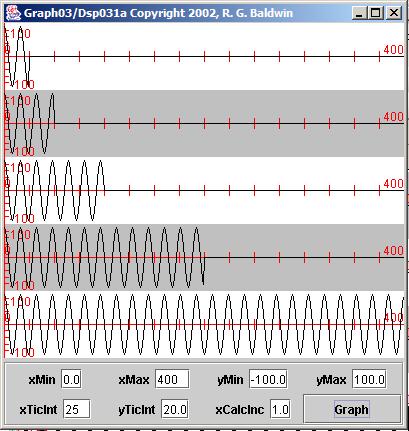| << Chapter < Page | Chapter >> Page > |
I recommend that you open another copy of this module in a separate browser window and use the following links to easily find and view the Figuresand Listings while you are reading about them.
Before I get into the technical details, here is a preview of the programs and their purposes that I will present and explain in this module:
In addition, I will use the following programs that I explained in the module titled Spectrum Analysis using Java, Sampling Frequency, Folding Frequency, and the FFTAlgorithm .
Let's begin by looking at the time series data that will be used as input to the first spectral analysis experiment. Figure 1 shows five pulses in the time domain. Figure 2 and Figure 3 show the result of performing a spectral analysis on each of these pulses.
(The display in Figure 1 was produced by the program named Dsp031a, which I will explain later.)
| Figure 1. Five pulses in the time domain. |
|---|
 |
If you examine Figure 1 carefully, you will see that each pulse is twice as long as the pulse above it. (There is a tick mark on the horizontal axes every twenty-five samples.) The bottom pulse is 400 samples long while the top pulse is 25 samples long.

Notification Switch
Would you like to follow the 'Digital signal processing - dsp' conversation and receive update notifications?